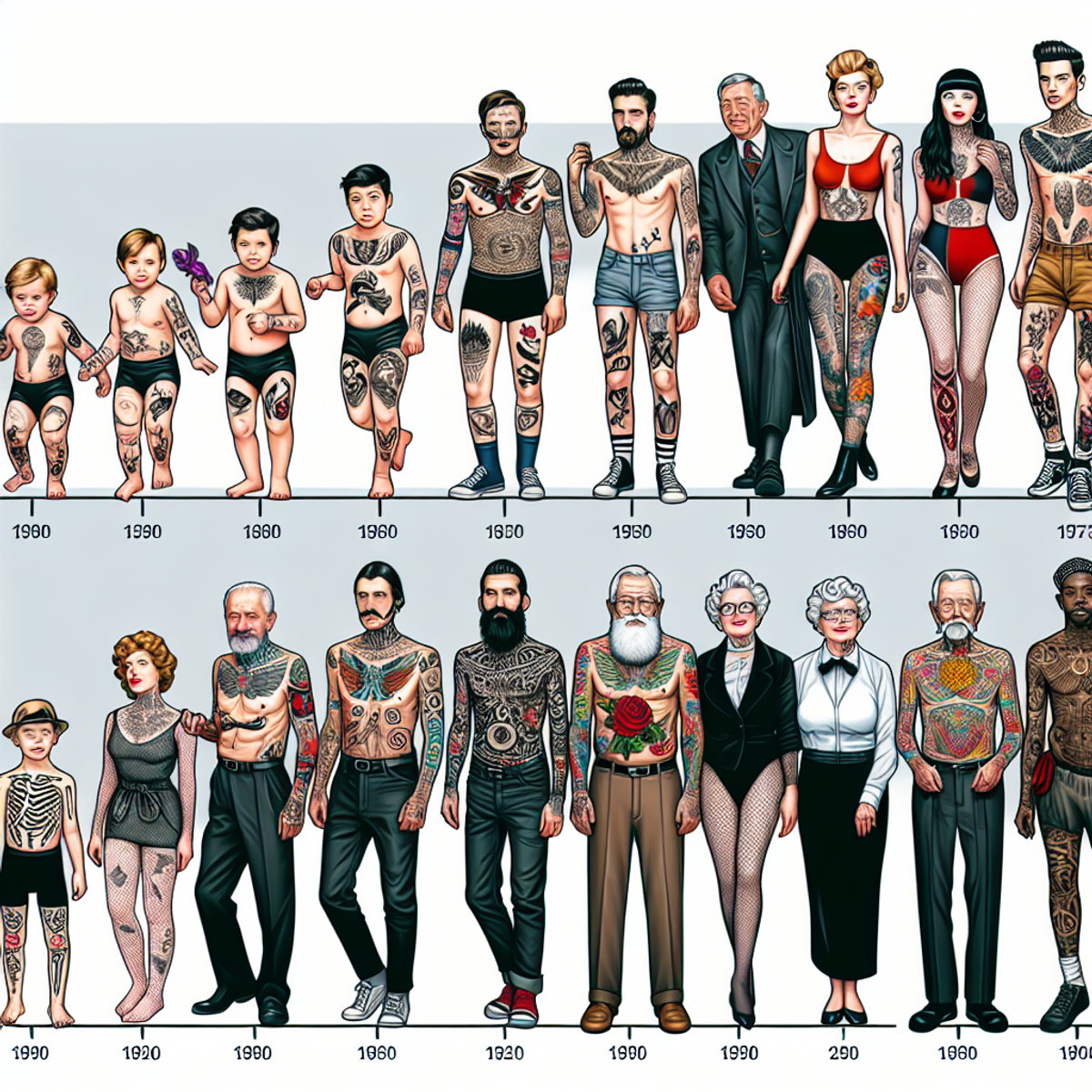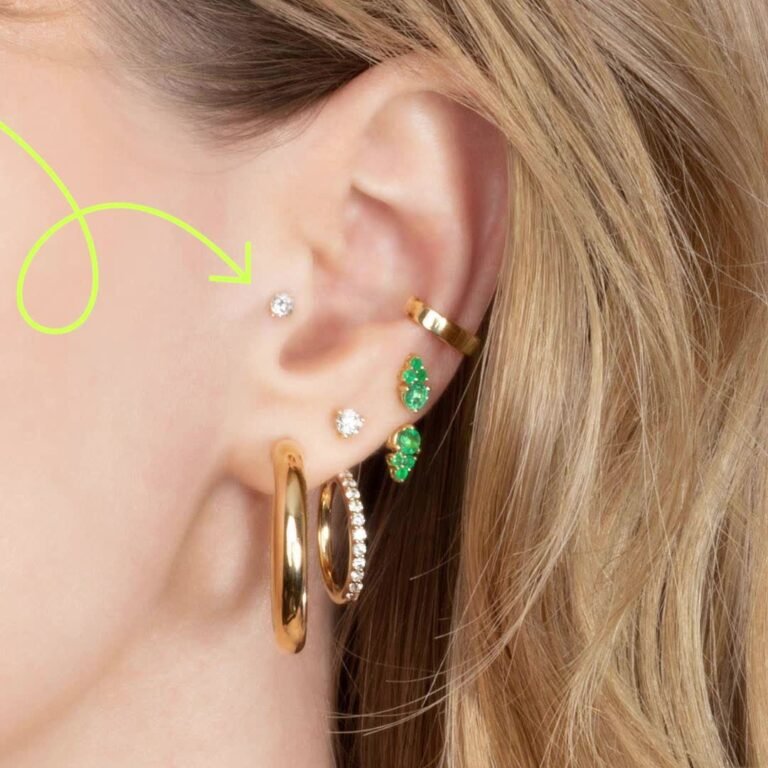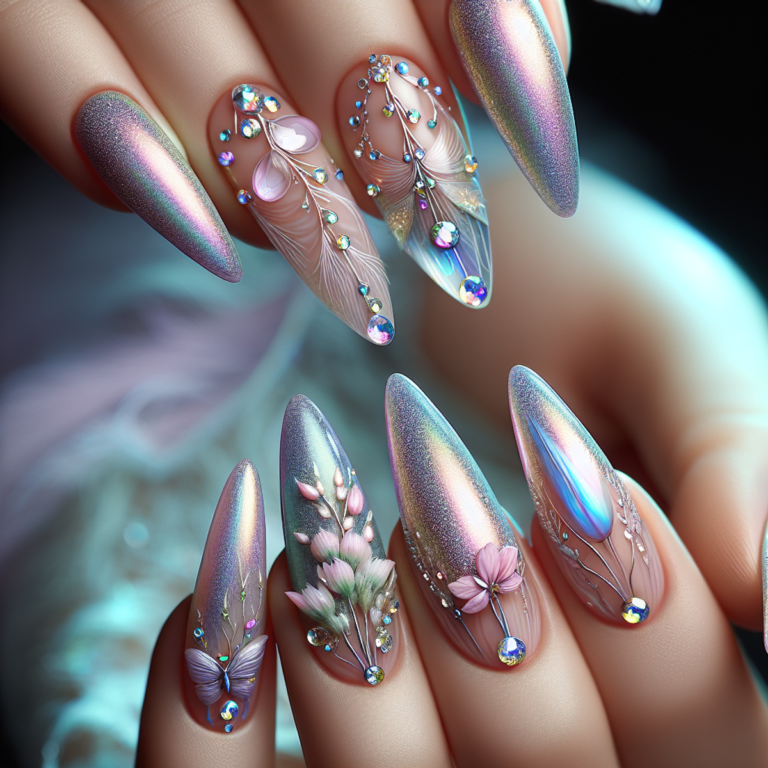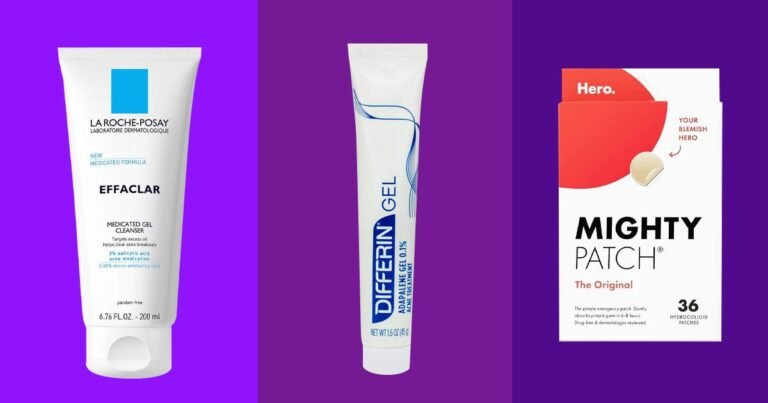How tattoo styles and trends have changed over the years

Introduction
Tattoos have been a form of self-expression and cultural significance for centuries. Across different cultures, tattoos hold various meanings, representing personal beliefs, milestones, and societal affiliations. Over time, tattoo styles and trends have evolved, reflecting the changing preferences of individuals and the broader shifts in society.
In this article, we will explore the fascinating journey of tattoo styles and trends, spanning from the early 20th century to the present day. We will delve into the transformation of tattoo aesthetics, discussing the key influences that shaped these changes. From bold black tattoos to vibrant colors, from counterculture rebellion to mainstream acceptance, let’s uncover how tattoos have evolved as an art form and a means of self-expression.
The Early 20th Century: Bold Black Tattoos
The early 20th century was a crucial time for tattoo styles. It was during this period that bold black tattoos with strong outlines and minimal shading became popular. These tattoos laid the foundation for traditional techniques still seen in today’s designs.
1. Dominant Style
The most common tattoo style during this era was characterized by:
- Strong black lines
- Limited use of color or shading
These tattoos often featured:
- Powerful imagery
- Clear and simple designs
The focus on bold lines allowed for timeless and impactful tattoos.
2. Influence of Traditional Techniques
The look of blackwork designs drew heavily from traditional tattooing methods, particularly those used in sailor tattoos and tribal art.
Sailor Tattoos
Sailor tattoos were popular among seafarers and often included iconic symbols like anchors, ships, and swallows. These images were typically done in bold black ink, representing themes of strength, protection, and resilience while reflecting the maritime culture of the time.
Tribal Art
Early 20th-century tattoos were also influenced by tribal art from various indigenous cultures worldwide. These tribal designs were known for their boldness and geometric patterns, holding significant meanings related to identity, heritage, and spiritual beliefs.
The Impact
The early 20th century played a crucial role in shaping the world of tattoos as we know it today. It introduced a unique aesthetic characterized by strong use of black ink and clear outlines. This period served as a bridge between traditional techniques and future innovations in tattoo styles, inspiring artists to create meaningful and visually striking designs.
To gain further insight into the historical significance of tattoo art during this era, you can explore this fascinating article on the hidden and secret meanings in historical tattoo art.
The Colorful Revolution: Vibrant Tattoos in the 1950s and Sailor Jerry’s Influence
The 1950s brought about a major change in tattoo designs, thanks to the use of new tattoo colors that sparked a vibrant revolution in ink. Instead of the traditional blackwork tattoos of earlier years, people started opting for colorful tattoos. One person who played a crucial role in making this trend popular was Norman “Sailor Jerry” Collins.
Shift towards Vibrant Color Palettes
In the 1950s, tattoo artists were able to explore a wide range of colors thanks to the availability of new tattoo pigments. Bright shades like red, blue, yellow, and green became increasingly favored, allowing for more detailed and visually appealing designs. This departure from the mostly black ink used before gave birth to a new era of tattoo artistry known for its bold and attention-grabbing looks.
The Influence of Sailor Jerry
Norman “Sailor Jerry” Collins was one of the most influential tattoo artists of his time. He was famous for his bold and illustrative style that incorporated vibrant colors. Sailor Jerry played a significant part in shaping the colorful revolution of tattoos during the 1950s. His inspiration came from images related to sailing and American culture, which he skillfully included in his designs.
Maritime Imagery and Cultural Iconography
Sailor Jerry’s designs were deeply rooted in traditional American tattooing. He drew inspiration from themes commonly associated with sailors, such as life at sea. Some of his well-known tattoos featured elements like ships, mermaids, anchors, and swallows. These maritime symbols not only paid tribute to the extensive history of seafaring but also added a sense of thrill and liberation to his artwork.
Apart from maritime imagery, Sailor Jerry also integrated cultural symbols into his designs. He embraced icons linked to American heritage, including eagles, Native American patterns, and patriotic emblems. By combining traditional American visuals with vibrant colors, he created a unique style that resonated with many people.
Legacy and Continued Influence
Sailor Jerry’s impact on the tattoo industry cannot be overstated. His bold and colorful designs continue to inspire artists and enthusiasts alike. Today, many tattoo artists draw inspiration from Sailor Jerry’s work, incorporating his signature style into their own creations. His influence is particularly evident in the popularity of traditional American tattooing, which remains a timeless and cherished tattoo aesthetic. You can find more about this here.
The colorful revolution of the 1950s, sparked by the use of new pigments and Sailor Jerry’s innovative approach to tattooing, marked a significant moment in the evolution of tattoo styles. The vibrancy and boldness seen in tattoos from this era laid the foundation for the wide variety of styles we see today. For a more detailed exploration of this revolution, you can refer to this article on 1950s tattoo style.”.
Tattoos as Counterculture Symbols: The 1960s and 70s
The 1960s and 1970s were a crucial time for tattoos, as they evolved into powerful symbols of counterculture, challenging society’s norms and allowing individuals to express their unique identities. This transformation was particularly evident within underground groups such as the hippies and bikers, where tattoos held deep significance.
1. Protest Against Mainstream Society
During the 1960s, a period marked by significant societal changes, tattoos emerged as a visual means of rejecting traditional values and advocating personal freedom. They became an eye-catching way for countercultural individuals to challenge established ideas and demonstrate their defiance against mainstream society (The Councilor).
2. Link to Underground Subcultures
Tattoos played a vital role within the hippie and biker communities as they represented identity and belonging. People in these groups used body ink to establish solidarity with others who shared their beliefs in freedom, self-expression, and opposition to authority. Tattoos became a form of visual language that conveyed one’s commitment to these countercultural ideals (source).
3. Influence of Music Genres
The rise in popularity of music genres like rock ‘n’ roll and punk during this era had a profound impact on making tattoos mainstream symbols of rebellion among young people. Musicians who were known for their tattoos became influential figures in the realm of non-conformity, inspiring their fans to get inked as a means of defying societal norms (source). This further solidified the connection between tattoos and counterculture movements.
The 1970s witnessed an expansion of this association, with larger and more intricate tattoo designs gaining popularity. As rebellious attitudes continued to permeate society, tattoos remained closely tied to the spirit of protest and individualism. They became a visual representation of an entire generation’s desire for change.
This pivotal period in tattoo history laid the groundwork for transforming body art from something associated with being on the fringes of society to a form of self-expression that would eventually be embraced by all.
From Subculture to Mainstream: The Popularization of Tattoos in the 1980s and 90s
The perception of tattoos underwent a significant change in the 1980s and 1990s. They shifted from being associated with counterculture to being widely accepted by society. This shift was influenced by various factors that brought tattoos into the mainstream.
The Influence of Media and Celebrity Culture
- Films like “The Tattoo Connection” and the establishment of tattoo reality shows played a pivotal role in bringing tattoo art into the public eye. These media platforms showcased the intricate and diverse world of body art, sparking curiosity and fascination among audiences.
- Celebrity figures such as Cher and David Beckham became influential advocates for tattoos, showcasing their extensive and elaborate collections. Their public visibility helped shape mainstream perceptions of inked individuals, contributing to the normalization of tattoos as a form of personal expression.
Evolution of Tattoo Styles
- Alongside the growing popularity of tattoos, new styles emerged to cater to changing aesthetic preferences. Tribal and New School designs gained prominence during this period, characterized by bold colors, imaginative motifs, and a departure from traditional tattoo aesthetics.
- The vibrant and dynamic nature of these styles resonated with individuals seeking distinctive forms of self-expression, further fueling the widespread appeal of tattoos.
Feminine-Oriented Tattoo Trends
- A notable trend during this era was the rise of delicate and feminine-oriented tattoos. Influenced by popular culture icons like Pamela Anderson’s iconic barbed wire armband tattoo, there was a surge in demand for more refined and elegant designs.
- Butterflies, hearts, floral motifs, and other graceful symbols became increasingly popular choices for individuals seeking to adorn their bodies with subtle yet meaningful ink.
The 1980s and 1990s represented a transformative period for tattoos, as they transcended their subcultural roots to become an integral part of mainstream fashion and self-expression. The convergence of media exposure, celebrity influence, evolving artistic styles, and the embrace of feminine aesthetics collectively contributed to the widespread acceptance and evolution of tattoo culture during this time.
The Digital Age of Tattooing: Technology and Online Community
The world of tattooing underwent a significant transformation in the early 2000s. This was due to the emergence of technology and social media platforms that revolutionized how tattoos were created, shared, and valued.
The Impact of Social Media
One of the most game-changing aspects of this digital era was the introduction of social media platforms like Instagram. These platforms gave tattoo artists a powerful tool to display their work in an attractive and easily accessible way. With just a few taps, artists could now showcase their art to a global audience, allowing people from all walks of life to appreciate their talent.
Through social media, tattoo artists were able to:
- Share their portfolio
- Document their creative process
- Interact directly with potential clients
This level of connectivity not only boosted the visibility of skilled artists but also enabled individuals to discover new styles and trends from around the globe. As a result, the influence of various cultures and artistic techniques spread wider than ever before.
Technological Advances in Tattooing
In addition to the rise of social media, technology played a vital role in shaping the digital age of tattooing. Improved tattoo machines became more precise and efficient, making it easier for artists to create intricate designs. These machines offered better control over needle speed and depth, resulting in sharper lines and smoother shading.
Another significant breakthrough was seen in laser removal methods. Thanks to advancements in laser technology, getting rid of tattoos became more effective and less painful compared to traditional approaches like dermabrasion or surgical removal. This development gave individuals more flexibility in altering or completely erasing tattoos that no longer resonated with them.
The Rise of Hyper-Realistic Tattoos
The digital age sparked a growing demand for hyper-realistic tattoos within the tattoo community. Artists began pushing boundaries by:
- Creating lifelike portraits that seemed to jump off the skin
- Using 3D illusions to add depth and dimension to their designs
This hyper-realistic approach allowed for the replication of intricate details and brought a new level of artistry to tattoos.
Tattoos featuring realistic portraits of loved ones, celebrities, or fictional characters became highly sought after. The level of skill and precision required for these types of tattoos is truly remarkable, showcasing the talent and dedication of tattoo artists in the digital age.
Hyper-realism also extended beyond portraits. Artists started incorporating elements such as optical illusions, surreal landscapes, and intricate textures into their designs. This style not only pushed the boundaries of what was possible within tattooing but also provided individuals with a fresh way to express their creativity.
The digital age of tattooing brought significant changes to the industry, benefiting both artists and enthusiasts. With social media platforms like Instagram offering a global stage, technological advancements enhancing the tattooing process, and hyper-realistic art styles redefining creativity, the potential for tattoos became limitless.
Current Trends in Tattoo Styles: From Anime-Inspired to Minimalist Designs
In recent years, the world of tattooing has witnessed the emergence of new and exciting trends in tattoo aesthetics. These trends reflect the ever-evolving tastes and preferences of individuals who seek unique and personalized forms of self-expression. From anime-inspired designs to minimalist tattoos, let’s explore some of the current trends that are making waves in the tattoo community.
Anime-Inspired Tattoos: A Fusion of Pop Culture and Art
One of the most notable trends in tattoo styles today is the rise of anime-inspired tattoos. With the growing popularity of Japanese anime and video games, it’s no surprise that fans are choosing to immortalize their favorite characters on their skin. These tattoos often feature vibrant colors, intricate linework, and dynamic compositions that capture the essence of beloved anime characters.
Anime-inspired tattoos allow individuals to showcase their passion for a particular series or character while also incorporating elements of artistic expression. From iconic figures like Goku from Dragon Ball Z to Sailor Moon herself, these tattoos serve as a tribute to both pop culture icons and the artistry behind them.
Minimalist Tattoos: The Beauty of Simplicity
As tattoo culture has become more mainstream, there has been a growing desire for subtlety and simplicity in tattoo designs. This has given rise to the trend of minimalist tattoos, characterized by clean lines, delicate details, and abundant negative space.
Minimalist tattoos offer a refreshing departure from large and intricate designs, providing a more understated form of self-expression. They often feature minimalist symbols such as geometric shapes, flowers, animals, or even single-word quotes. These tattoos allow individuals to convey meaningful messages or represent significant aspects of their lives in a subtle yet elegant manner.
The appeal of minimalist tattoos lies in their versatility and timeless aesthetic. They can be easily incorporated into various body parts and seamlessly blend with different styles or existing tattoos. Additionally, their simplicity makes them less likely to fade or blur over time, ensuring that the tattoo remains crisp and visually appealing for years to come.
Embracing Personalized Expression
The current trends in tattoo styles reflect a broader shift towards personalized expression and individuality. People are no longer confined to traditional tattoo designs or limited by societal expectations. Instead, they are embracing the freedom to choose tattoos that hold personal significance and resonate with their unique identities.
Whether it’s an anime-inspired sleeve or a tiny minimalist symbol, these current trends allow individuals to showcase their passions, beliefs, and stories through art. Tattoos have become a powerful means of self-expression, providing a canvas for individuals to create a visual representation of their innermost thoughts and emotions.
The world of tattooing is constantly evolving, with new trends emerging to cater to the ever-changing tastes and preferences of individuals. The rise of anime-inspired tattoos and minimalist designs exemplifies the diverse range of artistic expressions within the tattoo community. These trends allow people to celebrate their favorite pop culture icons or convey deep personal meanings through art. Whether you choose vibrant colors and dynamic compositions or opt for clean lines and negative space, the possibilities for self-expression through tattoos are endless.
Cultural Appropriation vs. Appreciation in Tattooing
The evolution of tattoo styles and trends has not been without controversy, particularly when it comes to the appropriation of indigenous tattoo designs. While tattoos have long held cultural significance in many indigenous communities around the world, their rise in popularity has led to concerns about cultural exploitation and disrespect. It is important to navigate this issue with sensitivity and understanding, distinguishing between cultural appreciation and cultural appropriation.
Understanding Cultural Revival and Tribal Tattoos
Indigenous tattoo designs often carry deep cultural, spiritual, and historical meanings within their respective communities. These tattoos have served as a way for individuals to connect with their heritage and express their identity. In recent years, there has been a cultural revival of indigenous tattoo practices, as people seek to reclaim and celebrate their ancestral traditions (source).
Tribal tattoos, inspired by the artistry of indigenous cultures, have gained popularity among non-indigenous individuals. These designs incorporate various elements such as patterns, symbols, and motifs that hold significance within indigenous communities. However, the appropriation of these designs without understanding or respect for their cultural context can be deeply problematic.
The Controversy Surrounding Cultural Appropriation
Cultural appropriation occurs when elements of one culture are adopted by members of another culture without proper understanding or respect for its original context. In the context of tattooing, cultural appropriation refers to the replication of indigenous tattoo designs without acknowledging their cultural significance or seeking permission from the communities they belong to (source).
This issue raises questions about power dynamics and colonial histories. Indigenous peoples’ cultures have often been marginalized or suppressed throughout history. When non-indigenous individuals appropriate indigenous tattoo designs without engaging in meaningful dialogue or supporting these communities, it perpetuates a cycle of erasure and exploitation (source).
Promoting Cultural Appreciation through Collaboration
However, it is possible for non-indigenous individuals to engage in cultural appreciation rather than appropriation when it comes to indigenous tattoo designs. Collaboration between non-native tattoo artists and indigenous communities can foster understanding and respect for cultural practices.
Examples of such collaborations include tattoo artists working directly with indigenous communities, seeking their guidance and permission to incorporate elements of their designs. These collaborations often result in beautiful and meaningful tattoos that honor the cultural heritage of the indigenous communities involved.
Respecting Cultural Significance
Respecting cultural significance is crucial when it comes to getting tattooed with designs inspired by indigenous cultures. It’s essential to recognize that these designs are not mere fashion statements but hold deep meaning within their respective communities.
Before getting an indigenous-inspired tattoo, take the time to research and understand the cultural significance behind the design. Engage in conversations with individuals from the culture you are drawing inspiration from, seeking their perspectives and insights. This approach ensures that you are honoring and appreciating the culture rather than appropriating it.
As tattoo styles and trends continue to evolve, it is important to approach cultural influences with respect, understanding, and appreciation. The controversy surrounding the appropriation of indigenous tattoo designs highlights the need for ongoing dialogue and collaboration between
The Future of Tattoo Artistry: Innovation and Personalization
The evolution of tattoo styles has been closely intertwined with technological advancements, and the future of tattoo artistry holds exciting possibilities for innovation and personalization. As the art form continues to evolve, it is essential to consider how these advancements may shape the future of tattooing.
Advancements in Technology
Technological innovations are pushing the boundaries of traditional tattooing, opening up new possibilities for creativity and self-expression. Two key areas where advancements are being made include:
- Programmable Ink: This type of ink contains special pigments that can change color or appearance in response to external stimuli such as light or temperature. With programmable ink, tattoos could potentially transform into different designs or patterns based on the wearer’s preferences or environmental factors.
- Augmented Reality Tattoo Previews: Using augmented reality (AR) technology, artists can now create virtual representations of tattoos that can be superimposed onto a person’s skin in real-time. This allows individuals to see how a tattoo would look on their body before committing to the actual ink. AR tattoo previews help minimize any potential regrets or dissatisfaction with the design choice.
These technological innovations offer a glimpse into a future where tattoos can be interactive and dynamic, allowing individuals to change their designs at will or even integrate technology into their body art.
Embracing Unique Journeys
With the increasing diversity of tattoo styles and techniques, individuals have more opportunities than ever before to explore and express their identities through personalized body art. Here are some suggestions for embracing your own unique journey in tattooing:
- Discovering Different Styles: Take the time to research and explore various tattoo styles that resonate with you. Whether it’s traditional Japanese irezumi, intricate geometric patterns, or delicate watercolor designs, each style carries its own symbolism and aesthetic appeal.
- Understanding Cultural Contexts: Tattoos have deep cultural roots in many societies around the world. It’s important to educate yourself about the historical and cultural significance of specific tattoo motifs or practices before getting inked with them. This helps ensure that you’re approaching the art form with respect and appreciation for its origins.
- Sharing Your Story: Tattoos can serve as powerful storytelling tools, allowing individuals to visually communicate their experiences, beliefs, or values. Think about how you can incorporate elements or symbols into your tattoos that hold personal meaning for you.
By understanding the historical and cultural significance of different tattoo styles, individuals can make informed decisions that honor the origins of these artistic traditions.
By embracing technological advancements and respecting the cultural significance of tattoo styles, individuals can look forward to a future where tattoo artistry becomes even more personalized and meaningful.
Conclusion
The evolution of tattoo styles and trends reflects the dynamic nature of human expression and societal influences over time. Tattoos have changed from traditional blackwork designs to vibrant, colorful pieces, symbolizing shifts in cultural attitudes and artistic innovations. However, the fundamental significance of tattoos as a form of personal storytelling and self-expression remains constant.
Embracing the Rich Diversity of Global Tattoo Traditions
The history of tattoo artistry is deeply rooted in diverse cultural traditions, each with its own symbolism and significance. As readers explore various tattoo styles and trends, they are encouraged to appreciate the rich tapestry of global tattooing practices. By understanding the cultural contexts from which different designs arise, individuals can approach tattooing as a respectful and thoughtful practice.
Celebrating Individuality through Personalized Designs
While acknowledging the broader evolution of tattoo aesthetics, it’s essential for individuals to embrace their own unique journey in choosing and creating tattoos. Each design holds personal meaning and significance, reflecting individual stories, beliefs, and experiences. By celebrating their individuality through personalized designs, readers can fully express themselves through this timeless art form.
Continued Evolution and Innovation
As technology continues to advance and societal perspectives evolve, the future of tattoo artistry holds boundless possibilities. Innovations such as programmable ink and augmented reality tattoo previews may shape the next chapter of this ancient practice. It’s an exciting time for both artists and enthusiasts as they witness the ongoing evolution of tattoo styles and techniques.
In conclusion, while the visual aesthetics of tattoos have transformed significantly throughout history, the core essence of self-expression and storytelling remains unwavering. As readers embark on their tattoo journey, they are encouraged to honor both their chosen designs and the diverse cultural heritage that enriches the world of tattoo artistry.










